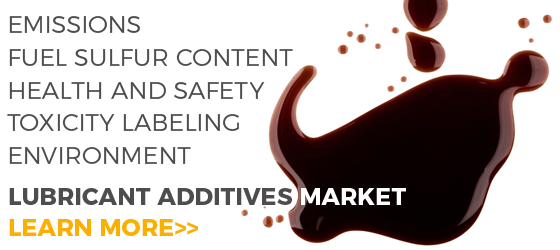The dynamic lubricant additives market may appear stable with modest overall growth figures; however, these numbers mask the numerous changes impacting the additives industry. Regulations around emissions, fuel sulfur content, health and safety, and toxicity labeling are some of the main drivers of change in this industry.
The global drive toward lower emissions and better vehicle fuel economy in the commercial and consumer vehicle market is driving OEMs to squeeze every extra percent of fuel economy out of their drivetrains, shifting even the commercial truck industry toward lower viscosity grades while still requiring the lubricants to be more robust and provide longer fluid life.
In marine, the IMO 2020 limit on fuel sulfur content will drastically change the marine additives market as shipping companies scramble to find the most economical way to comply with the new mandates. European REACH regulations and labeling requirements are rendering some additive chemistries obsolete and forcing smaller companies to consolidate or move out of the market.
Overall, the lubricant additives market is expected to grow in line with the global lubricants market; however, the additive companies are tasked with helping lubricant marketers meet all the needs of future lubricants.
These findings and more are available in the recently published Global Lubricant Additives: Market Analysis and Opportunities report. This study provides a detailed independent appraisal of the global lubricant additives market. Estimates of additive consumption by end-use applications, additive function, and regions are provided. Demand estimates for different additive function classes are further broken down by chemical classes.

